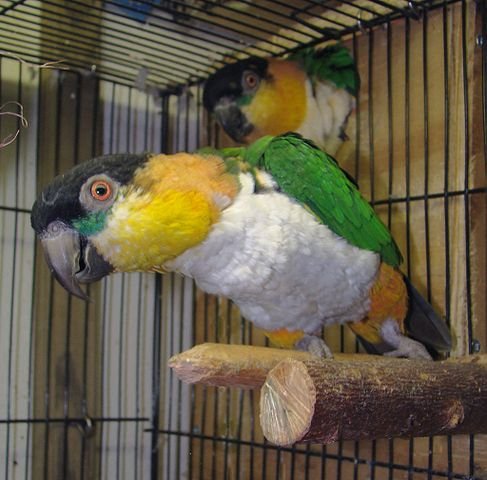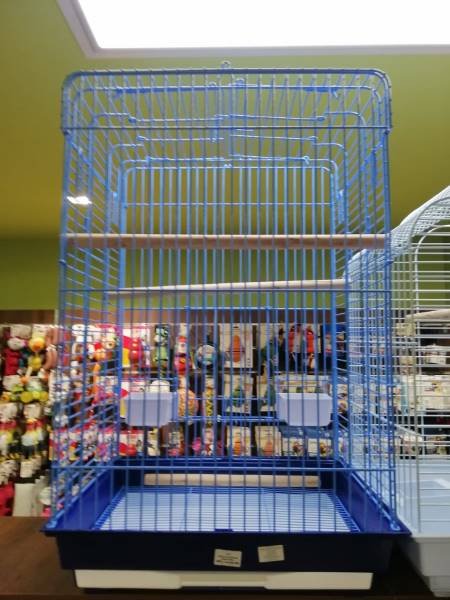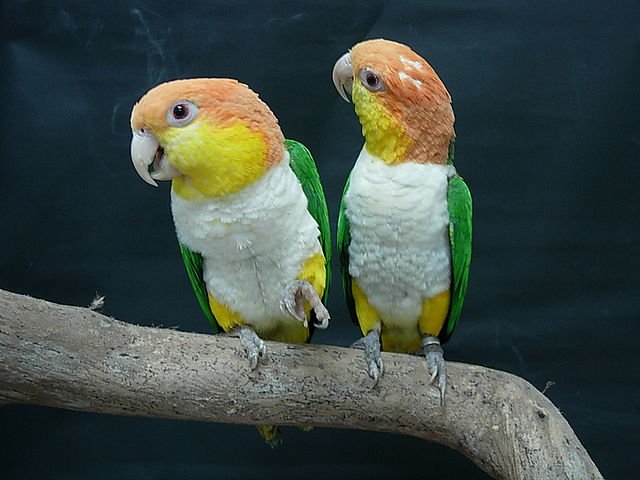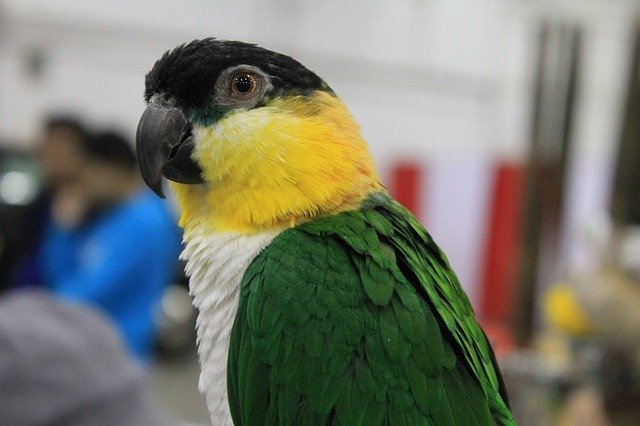Like comics are capable of making you laugh all day, a Caique can make you laugh even more. It is no surprise that the Caique is called the clown of birds. The Caique makes a great pet and has thus increased in popularity not only for its attractive look but also for its ability to make people laugh. With this beautiful bird around, you can be sure of having a great laugh when you spend time with it.
Now you can agree that the Caique is not a bird to be allowed to go into extinction. This is why it is important to learn about Caique breeding to help your feathered friend in its breeding stage and ensure the fantastic creature exists for many more years.
In this article, you are about to learn all you need to know about successfully breeding a Caique.
Caique Gender difference
Caiques are sexually monomorphic. Although there are few differences in the behaviors of both sex, it can be inaccurate to determine the sex by watching the behavior as there are some exceptional cases.
Generally, male caiques are the aggressive ones while the females are timid. However, few owners have reported that their hens are the aggressive ones and they exhibit behaviors that are associated with the males.
This is why it is advised to determine the sex using a DNA test to be on a safer side. There are lot of DNA laboratory doing feather testing. Here is example of one more popular. To be honest i did not try their bird DNA tests and i am not affiliated with them. Bird DNA Gender Test
Getting pairs ready
As an owner, you should be careful when introducing Caique pairs. Birds living alone are more receptive than those who have stayed with a companion all their lives. In the case of a Caique living with a companion before, its companion should be removed far from sight before introducing a mate for breeding.
The way the Caique birds act varies; with some, it is love at first sight, while some take a long time to bond. This is why it is best to get them from the same place where they would have been familiar with each other before and would have probably bonded before (if you do not have a bird initially).

Caiques can be choosy. If you are introducing a new mate to your bird, take time to watch them and be sure your bird wants the new friend you just got. For example, a Black-headed caique gets agitated if forced to mate with a bird it doesn’t like.
Normally, Caiques in the wild choose their mates themselves and bond easily. You can also try that with your bird by introducing a bird and watching them closely to see if it gets accepted by your bird. If not, then you have to remove the bird as soon as possible then try again with another bird.
Also, Caiques are territorial birds. It is advised to use a new cage to introduce the new pairs because your bird might get aggressive towards the new bird in its original cage. After you have successfully gotten a pair, allow them to get used to each other; that way, they will mate easily.
Another point to note when getting a breeding mate is conducting a historical check on the new bird. It is important to ask questions about the bird especially if it is a hen. This is because some hens devour or break the eggs they lay while some may have health issues. It is also important to have the new bird checked by your avian vet when you take it home to be sure the bird is in a good condition.
Caique Breeding Cage and Nest box
Caiques will breed in various types and sizes of cages. If you are thinking of the appropriate cage size for the pair, you can use a cage that is three to six feet in length and two to three feet in width. That is enough to accommodate a pair of Caique. Some choose to separate the breeding pair in case of a mate that is introduced late, using a sheet to demarcate their cages placed side by side. This is done to prevent dominance and aggression. It is okay to house the breeding pair in the same cage if there is no aggressive behavior since the male can help the female care for the chicks and feed the hen itself. Either way, the Caique will breed successfully.
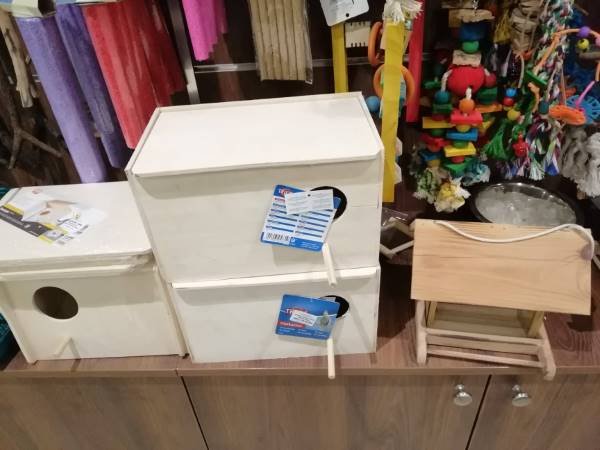
In the case of a nest box, a wooden box is recommended. Also, it is better than a metal box because the metal gets too cold in winter while it gets too hot in summer. A wooden box of 11 x 11 by 22 inches in length with an entry hole is always okay for the breeding pair. Caiques prefer to breed in small boxes if you think of getting a larger size for them.
It is advisable to make the cage and box high above the eye level to help the birds feel safe and give them privacy as they prefer to breed away from other eyes.
Reproductive behavior
Little is known about the reproductive behavior of Caiques in wild. Their reproductive behavior is influenced by environmental and seasonal factors such as rainfall, temperature, humidity, and photoperiod. However, they are monogamous. The hand-raised Caiques can be aggressive during the breeding stage or when they are paired with a mate because they are already used to their owners.
Caique Breeding
Generally, parrots breed once a year. The Caique’s breeding season varies in different locations. It breeds from October to April in the Amazon. Still, it has been found to breed from early January to June in outdoor captivity. Both males and females become sexually mature around two to three years of age and lay their first clutch in the third year. The clutch size is usually about three to six eggs.
The female and male Caique stays inside the nest box throughout the incubation period, which lasts for up to 26 days. There the male feeds the female while she sits on the eggs.
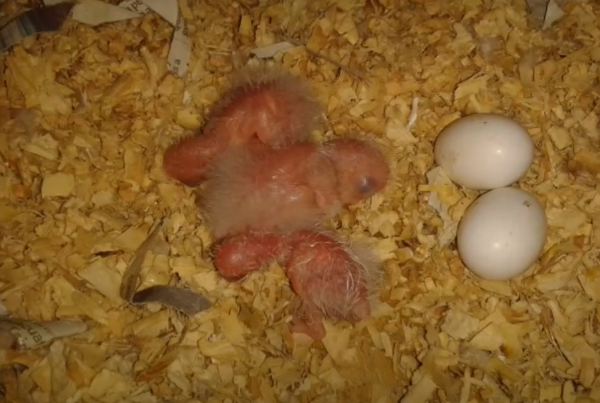
The chicks are born blind with few downy feathers. After hatching, the parents take turns to care for the chicks and also protect them. The chicks are usually fed by the hen, who regurgitates her digested food to feed the chicks. The parents stay with the chicks in the nest box throughout the fledgling stage, usually taking up to 12 days after birth.
Diet for Breeding Caique
Caiques feed on vegetables, flowers, fruits, small amounts of clay lick, and sometimes ants. The ones in captivity do well with pellets that contain the right amount of nutrients. Clay lick’s importance is unknown to some owners, and they tend to eliminate it from the bird’s diet.
Caiques in the wild search for their foods themselves and, of course, have various food to feed on. Those in captivity are the responsibilities of their owners and should be fed a diet that is rich in carbohydrates and fats needed for their daily activities. Their diet should be complemented with fruits and vegetables, which contain other nutrients needed by the birds.
Read More about Caique Diet here.
During breeding, the hen needs more protein and calcium for good egg health and proper chick growth. The latter is because the hen regurgitates her digested food to feed the chicks; therefore, by feeding the hen a sufficient amount of good diet, you are automatically feeding the chicks the appropriate diet. The hen should be fed enough food and also fed often because the chicks at the time often eat about every hour. Caiques should have cuttlebones in cage, which is a rich source of calcium.
Common Reproductive Problems
One common problem is obesity which is a result of feeding the bird too many seeds. This is why pellets are recommended as better diets than seeds which are high in fats. Obesity affects the overall reproductive health of birds and should be prevented by changing the bird’s diet.
Other common problems include breaking and eating eggs. This problem is quite common in Caiques and can make efforts futile. However, you can train your bird to stop breaking eggs by replacing them with a wooden egg once you discover it breaks its eggs. The bird will learn that eggs are not breakable when it tries to break the wooden egg and fails. With time it can stop breaking eggs.
Where to get a Caique breeding pair
The Caique bird is a bird that most bird owners will love to have, but unfortunately, most pet shops do not have this unique bird. You might have to consult breeders or an all-bird shop to get one.
Featured Photo Credit: TJ Lin Fruitwerks

